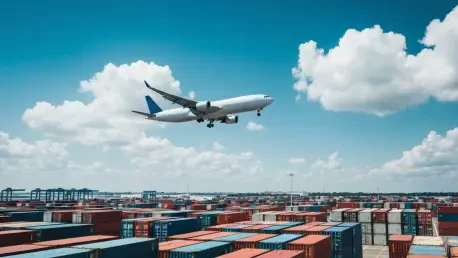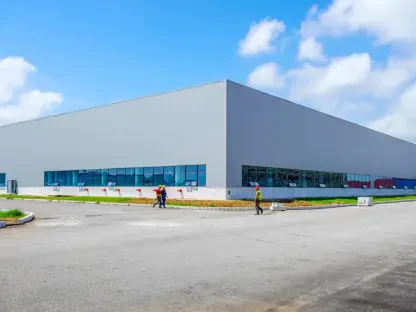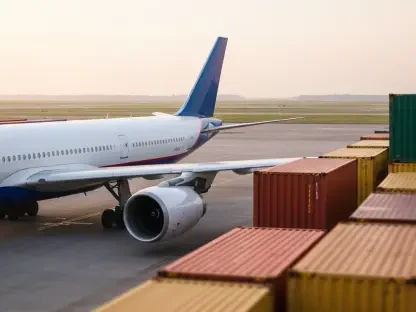In a shocking turn of events that has reverberated through the air cargo industry, a tragic crash involving a UPS MD-11 aircraft in Louisville, Kentucky, has led to the immediate grounding of this aircraft model by both UPS and FedEx, two of the largest cargo carriers in the world. The devastating incident, which claimed at least 14 lives, including three crew members, has raised urgent questions about the safety of the aging MD-11 fleet. Following the crash, Boeing, the manufacturer of the aircraft, issued a strong recommendation to suspend all MD-11 flight operations pending a comprehensive engineering analysis. This precautionary step, swiftly adopted by both companies, underscores the paramount importance of safety in aviation, even at the cost of operational disruptions. As the industry grapples with this crisis, attention has turned to how these carriers will manage their delivery networks and what this means for the future of cargo transport. The unfolding situation highlights a critical balance between maintaining service reliability and addressing potential risks in aircraft operations.
Safety Concerns Trigger Immediate Action
The catastrophic crash of the UPS MD-11 in Louisville has sent shockwaves through the aviation community, prompting an unprecedented response from both UPS and FedEx to ground their respective fleets of this aircraft model. Boeing’s advisory to halt operations for further investigation into potential mechanical or structural issues has been met with full compliance, reflecting a shared commitment to preventing further tragedies. The loss of life in this incident has cast a spotlight on the aging MD-11, a wide-body jet that has been a workhorse for cargo carriers for decades. While the exact cause of the crash remains under investigation, the decision to prioritize safety over operational continuity demonstrates the seriousness with which these companies view their responsibility to employees and customers alike. This move, though necessary, poses immediate challenges to maintaining delivery schedules, especially during peak demand periods. The focus now rests on ensuring that any underlying issues are identified and resolved before these aircraft return to the skies.
Beyond the immediate grounding, the collaboration between Boeing, UPS, FedEx, and regulatory bodies like the Federal Aviation Administration (FAA) signals a rigorous approach to addressing safety concerns. Engineering teams are reportedly working around the clock to analyze data and inspect the MD-11 fleets for any signs of systemic flaws that could have contributed to the Louisville incident. This process, while time-consuming, is critical to restoring confidence in the aircraft’s reliability. For UPS, which operates 29 MD-11s as approximately 9% of its air fleet, and FedEx, with 28 MD-11s comprising about 4% of its fleet, the temporary suspension represents a significant operational adjustment. Both carriers have emphasized that safety remains their top priority, even as they navigate the complexities of rerouting cargo and adjusting flight schedules. The ongoing coordination with the FAA ensures that any return to service will meet the highest standards of airworthiness, providing reassurance to the industry and the public that such a tragedy will not be repeated without thorough vetting.
Operational Impacts and Contingency Plans
With a portion of their fleets grounded, UPS and FedEx face the daunting task of maintaining their reputation for reliable service amidst significant logistical hurdles. UPS has expressed optimism that the suspension of its MD-11 operations will be temporary, leveraging its extensive network of alternative aircraft and ground transportation to mitigate delays. The company’s contingency plans include redistributing cargo across other aircraft types and optimizing ground routes to ensure that customer expectations are met. Despite the MD-11 constituting a relatively small percentage of its total fleet, the grounding comes at a time when air cargo demand remains high, making every aircraft’s availability crucial. The ability to adapt quickly to such disruptions is a testament to the robustness of UPS’s operational framework, though some minor delays in specific regions may still occur. The focus remains on transparency with customers about any potential impacts while working diligently to restore full capacity as soon as safety clearances are obtained.
FedEx, on the other hand, brings a slightly different perspective to managing this crisis, given its longer-term plan to retire its MD-11 fleet by 2032, a timeline extended from an earlier target. With an integrated air-ground network that allows for flexible rerouting of shipments, FedEx is well-positioned to absorb the impact of grounding 28 aircraft. The company has activated contingency measures to redistribute cargo loads, ensuring that service disruptions are minimized even as a small but notable portion of its air fleet remains out of commission. This strategic foresight, combined with investments in newer, more efficient aircraft, reflects FedEx’s ongoing transition away from older models like the MD-11. However, the immediate challenge lies in maintaining delivery timelines during this interim period, particularly for time-sensitive shipments. Both carriers’ proactive responses highlight a shared determination to uphold service standards, though the grounding undeniably tests the resilience of their logistical systems in the face of unexpected setbacks.
Broader Challenges in Air Cargo Operations
The grounding of the MD-11 fleets is not the only obstacle confronting UPS and FedEx in the current landscape of air cargo operations. An additional layer of complexity arises from an FAA-mandated 10% reduction in air traffic at 40 major U.S. airports, a measure tied to broader regulatory constraints following a government shutdown. While industry experts suggest that the overall impact on air freight may be limited, the temporary constraints on domestic operations could exacerbate the challenges posed by the MD-11 grounding. This reduction in air traffic capacity may lead to bottlenecks at key hubs, potentially delaying shipments and straining the carriers’ ability to meet tight delivery windows. The convergence of safety-driven decisions and external regulatory pressures paints a picture of an industry under strain, where every operational adjustment must be carefully balanced against customer expectations and contractual obligations. Navigating these dual challenges requires innovative solutions and close coordination with regulatory authorities.
Compounding these issues is the broader trend of operational hurdles that cargo carriers face in maintaining efficiency amidst evolving safety and regulatory landscapes. The air freight sector has long been a critical component of global supply chains, and disruptions like aircraft groundings or traffic reductions can ripple through to affect industries reliant on timely deliveries. For UPS and FedEx, the current situation underscores the need for robust contingency planning and investment in modernizing fleets to reduce dependence on older aircraft models. While the MD-11 grounding is a direct response to a tragic incident, it also serves as a reminder of the importance of proactive maintenance and fleet renewal strategies. As both companies work to address immediate disruptions, the FAA’s air traffic cuts highlight an external factor beyond their control, adding pressure to an already complex operational environment. The ability to adapt to such multifaceted challenges will likely shape the future resilience of air cargo operations.
Reflecting on Industry Priorities
Looking back, the decision by UPS and FedEx to ground their MD-11 fleets after the heartbreaking crash in Louisville stood as a defining moment for the air cargo sector, emphasizing that safety must always take precedence over operational demands. The swift response, guided by Boeing’s recommendation and supported by close collaboration with the FAA, demonstrated a unified commitment to preventing further loss of life. Both carriers navigated the immediate aftermath with strategic contingency plans, striving to maintain service reliability despite the temporary loss of key aircraft. The added challenge of FAA-mandated air traffic reductions further tested their adaptability, revealing the intricate balance required in managing such crises. Moving forward, the industry should focus on accelerating fleet modernization and enhancing safety protocols to prevent similar incidents. A deeper investment in advanced technologies for aircraft monitoring could offer long-term solutions, while sustained dialogue with regulators may help mitigate external operational constraints. These steps could pave the way for a safer, more resilient future in air cargo transport.









